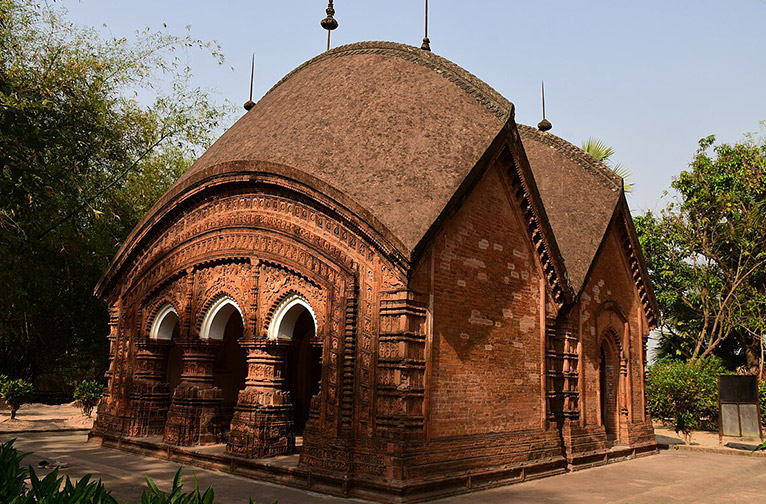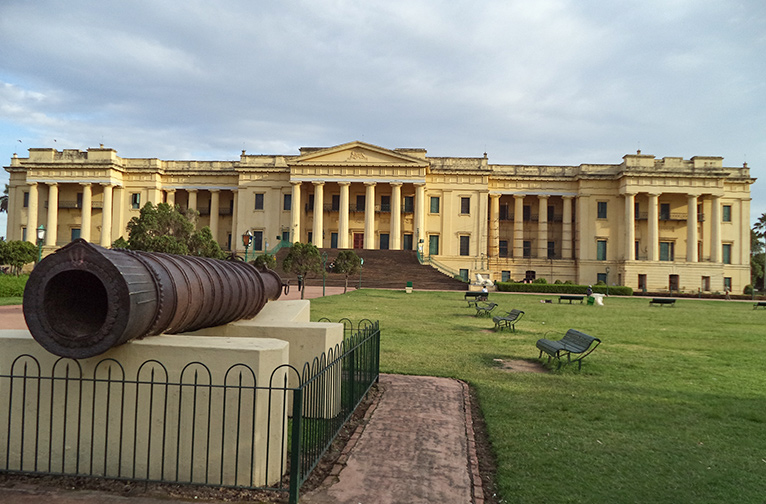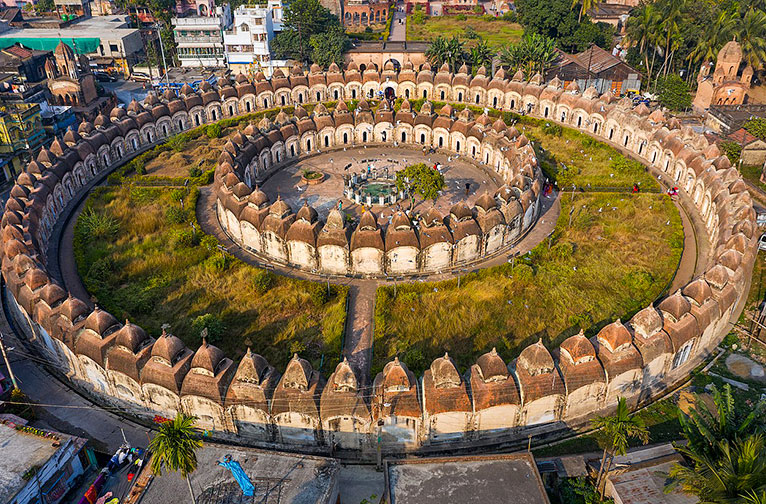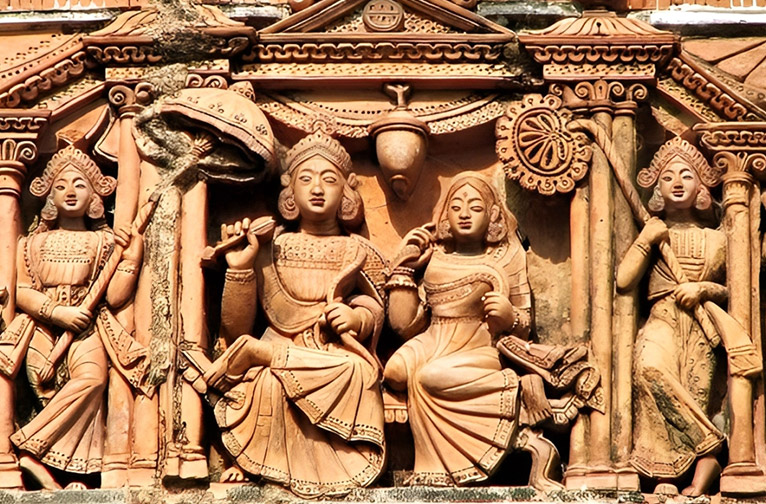The Hooghly, a major tributary of the holy Ganga and an iconic waterway of Kolkata, debouches into the Bay of Bengal and has a long and storied history. It is at Farakka where the Hooghly flows out from the Ganges to Kolkata.
From the posh riverside bungalows of the elites from the days of the Raj, to the bustling villages of its artisanal communities clinging to its embankments, to its lively ghats and temples, the landscape of the Hooghly (Lower Ganges) is a wonderland. A journey down the river offers an abundance of cultural delights, both sacred and secular, driven by its diverse population of ethnicities and faiths.
Trade and commerce, culture and charisma intertwine here with seamless ease in a narrative richly scripted by man and nature. The tidal river, which carried both cargo and passengers, played a pivotal role in the maritime activities of the Europeans in the 16th century.
Today, you can still discover bold traces in the settlements of the colonists from the later periods in small towns strung along their navigable sections. But were you aware that way ahead of the arrival of the colonists, in the 11th century, merchants from China, Southeast Asia, Ceylon, western India and the Near East, including Alexandria, drawn by its potential for trade opportunities, were cruising the river for both trade and diplomacy with the rulers of Bengal of those times?
At the tail end of the 17th century, Dutch, French, and English settlements mushroomed along the Hooghly. As were the colonists, you too will be embraced by the significance of the venerated river, as a divine force, in the life of the locals. As your ship ploughs through the tidal waters, it’s easy to recall those similar time-worn vignettes of life on its banks over millennia, greeting the eyes of the westerners of those times.
A short train ride from Kolkata brings you to Farakka, where, from nearby Jangipur, you’ll board Assam Navigation’s cruise liner ABN Rajmahal, a boutique modern ship. Feast your eyes on the swathes of mustard fields and mango orchards as the ship navigates its way down the winding course to Baranagar, your halt for the night.


he sleepy village is a tranquil pause of rural charm, which heightens the mystique of three pretty little temples made in terracotta. The morning sun wipes away the misty tendrils of dawn and brightens up their rosy hues. At Murshidabad’s waterfront, you encounter the delightful Hazarduari Palace. This iconic palace, in the capital of the Nawabs of Bengal, dates back to 1837. Built by an English architect in 1837, the palace offers a window to its Nawabil past with its delightful collection of pictures, chinaware, weapons and other artefacts. Kathgola Palace’s classical Georgian-style, favoured by rich local merchants, represents the flip side of the coin of the Raj’s 'White Mughal' period, when English and Indian cultures were so closely aligned to each other.


Continuing to sail downstream, there’s another lovely off-board excursion to the Khushbagh, a serene Mughal-style Garden where the last Nawab of independent Bengal, Siraj-ud-Daulah, was laid to rest along with his family. The ship then transports you downstream past the old British cantonment of Berhampur. At a nearby rural spot, the ship comes to a significant pause in its journey, where you will dwell upon the outcomes of the historic Battle of Plassey of 1757, at which Robert Clive, the Commander-in-Chief of British India, defeated Siraj-ud-Daulah. That historic event changed the course of Indian history. A walk through the fields brings you to the commemorative obelisk of that memorable milestone.


Cruising on to Mayapur, you visit the massive ISKCON (International Society for Krishna Consciousness) temple, which draws millions of Krishna devotees from around the world. Cycle rickshaws at Kalana offer rides to some of Bengal’s most attractive terracotta temples, as well as the unique Shiva temple with concentric rings made up of 108 votive shrines.
Sailing downstream past the old Dutch settlement at Chinsurah, the ship comes to rest at Chandernagore. Discover with delight this riverside enclave held by the French in Bengal till 1950. A major attraction here is the 18th-century church. Before he shifted base to Barrackpore, the Dupleix Palace served as the residence of the Governor-General of French India. A lazy trawl through the Cantt area takes you past Semaphore Tower, Government House, the Temple of Fame and Flagstaff House. Depending on tidal conditions on the river, you will enjoy a cruise under the iconic Howrah Bridge to reach central Kolkata.
Along the way, do keep your eyes peeled for sightings of the rare Gangetic dolphins that inhabit this part of the river and many avifaunal species and squads of huge fruit bats flying along the river at dusk.